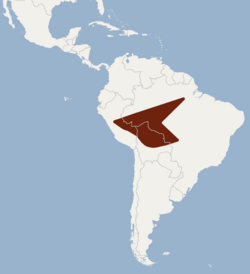| Benkeith's short-tailed bat | |
|---|---|
 | |
| Photograph of a live specimen of Carollia benkeithi | |
| Scientific classification | |
| Kingdom: | Animalia |
| Phylum: | Chordata |
| Class: | Mammalia |
| Order: | Chiroptera |
| Family: | Phyllostomidae |
| Genus: | Carollia |
| Species: | C. benkeithi |
| Binomial name | |
| Carollia benkeithi Solari & Baker, 2006 | |
 | |
Benkeith's short-tailed bat (Carollia benkeithi) is a leaf-nosed bat species found in Peru, Bolivia, and Brazil. [2] It very closely resembles the chestnut short-tailed bat, and the two species are likely often confused. [2]
